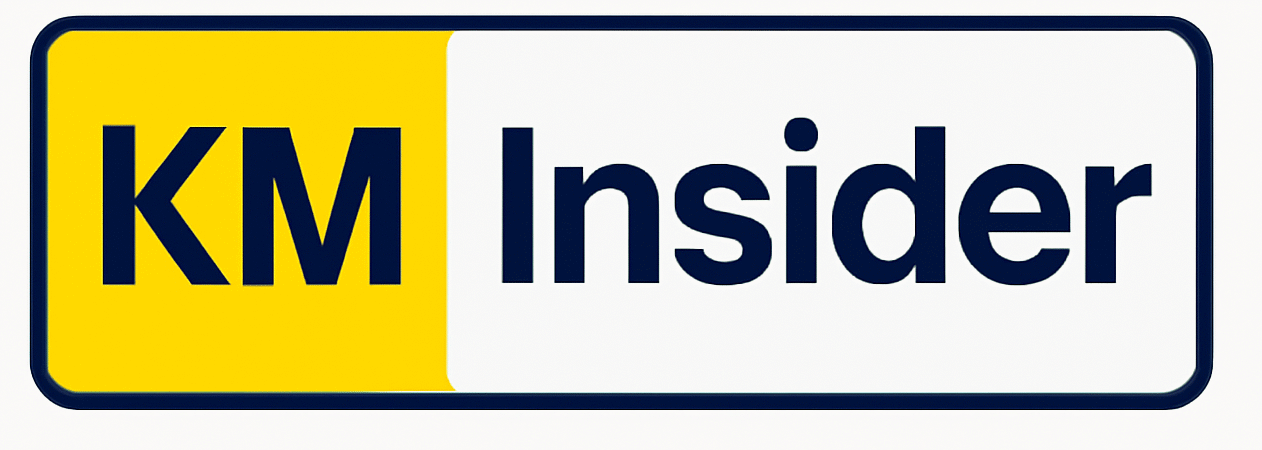Everyone says they want a learning organization. The standouts do something simpler and harder. They make knowledge flow. Not as a stack of documents, but as a living current that shapes daily work, decisions, and customer outcomes.
Below are five field-tested patterns from adaptive companies. Each pattern is practical, portable, and backed by credible sources.

1) Shrink the unit of work so knowledge can move faster
Large teams clog communication. Small, mission-bound teams keep knowledge close to the work and make it easier to circulate. Amazon institutionalized this with the “two-pizza team” idea. Teams are small enough to be fed by two pizzas, typically fewer than ten people. The goal is fewer communication lines, faster decisions, and clear ownership.
Make it actionable
- Keep core service or product teams under ten.
- Give each team a clear customer outcome and the data to judge it.
- Write decisions down in short, shareable memos that travel with the work.
2) Turn problem solving into a social learning loop
Toyota’s A3 method is more than a one-page report. It is a standard way to make thinking visible, invite challenge, and spread know-how across boundaries. Managers use A3s to document the problem, root causes, countermeasures, and follow up. The format creates shared context and helps people “learn how to learn” together.
Make it actionable
- Require A3-style narratives for high impact issues.
- Review them in short, frequent forums where cross-team peers can critique.
- Store final A3s in a searchable KB and link them to tickets, code, or SOPs.
3) Build autonomy with clear markets, not more hierarchy
Haier’s Rendanheyi model breaks the enterprise into micro-enterprises that act like internal startups. The structure pushes knowledge to the edge where customers are. Micro-enterprises form ecosystem communities to solve user problems together. Public sources note hundreds of these units and describe how employees can found one with decision rights and resource control. Earlier disclosures reported that about 77 percent of micro-enterprises crossed roughly USD 15.7 million in annual revenue, showing the model can scale.
Make it actionable
- Define internal “markets” where small teams own P&L-like outcomes.
- Let teams contract with one another for services, with SLAs and prices.
- Publish performance dashboards so knowledge about what works is visible.
4) Make candor a system, not a slogan
Adaptive cultures normalize open debate and rapid learning. Netflix’s culture memo codifies direct feedback, context sharing, and wide transparency on what is working and what is not. The company has kept this memo public for years and revises it to match practice. That visibility turns cultural ideas into teachable artifacts.
Make it actionable
- Teach “notes to self” and “notes to team” as routine knowledge objects.
- Record post-launch debriefs and make them discoverable in the KB.
- Reward specific, evidence-based feedback in performance reviews.
5) Institutionalize debriefs. The performance uplift is real
After-action reviews are not folklore. A 61-study meta-analysis covering 915 teams and 3,499 individuals found a large positive effect of debriefs on performance. The reported overall effect size was d = 0.79. That is a strong result across varied settings.
Make it actionable
- Run a 20-minute debrief after significant incidents or releases.
- Capture three essentials: what we intended, what happened, what we will change.
- Tag the notes to the relevant customers, systems, or products in your KB.
Design principles that keep knowledge moving
Make tacit knowledge visible, then circulate it
Ikujiro Nonaka’s work explains how organizations create knowledge by converting tacit insights to explicit forms and back again. Teams externalize know-how, combine it, and re-internalize it through action. Treat each artifact as a vehicle for movement, not just storage.
How to apply
- Capture quick demos, sketches, or short screen recordings.
- Pair every artifact with a “use it when” note and an owner.
- Review high-use artifacts quarterly to refresh or retire.
Prefer networks over ladders when work is novel
W. L. Gore has long used a lattice structure that favors direct peer communication and emergent leadership. The lattice reduces gatekeeping and lets knowledge find the person who needs it. The model is documented in company papers and research profiles, and the firm has scaled to thousands of employees with this design.
How to apply
- Remove single-point approvals for sharing internal knowledge.
- Map expert networks and encourage direct outreach without manager mediation.
- Let leaders emerge through followership on critical initiatives.
A simple operating cadence you can start next month
- Weekly
A3-style review of one meaningful issue. Publish the one-pager and link it to tickets or customer IDs. - Biweekly
Team debrief on outcomes, twenty minutes, no slides. Record three decisions and one experiment for the next cycle. - Monthly
Cross-team market of micro-contracts. Teams post what they can provide and what they need, with prices or service credits. - Quarterly
Culture tune-up. Revisit written principles and examples. Update the public culture note and pin it in the KB.
What success looks like in twelve months
- Smaller decision latency because teams are under ten and own clear outcomes. Expect faster cycle times and fewer cross-team handoffs.
- Higher reuse of solutions because A3s and debriefs are searchable and linked to work.
- Stronger customer fit because micro-enterprises or small teams operate near the user and learn in market.
- More open knowledge flows because the culture artifacts are living documents, not posters.
Closing thought
Knowledge will not flow because you buy a tool. It moves when teams are small, problems are made visible, debriefs are routine, markets replace layers, and candor is safe. The companies above show the pattern. Start with one practice this month and make it easy to share. The current will build from there.
